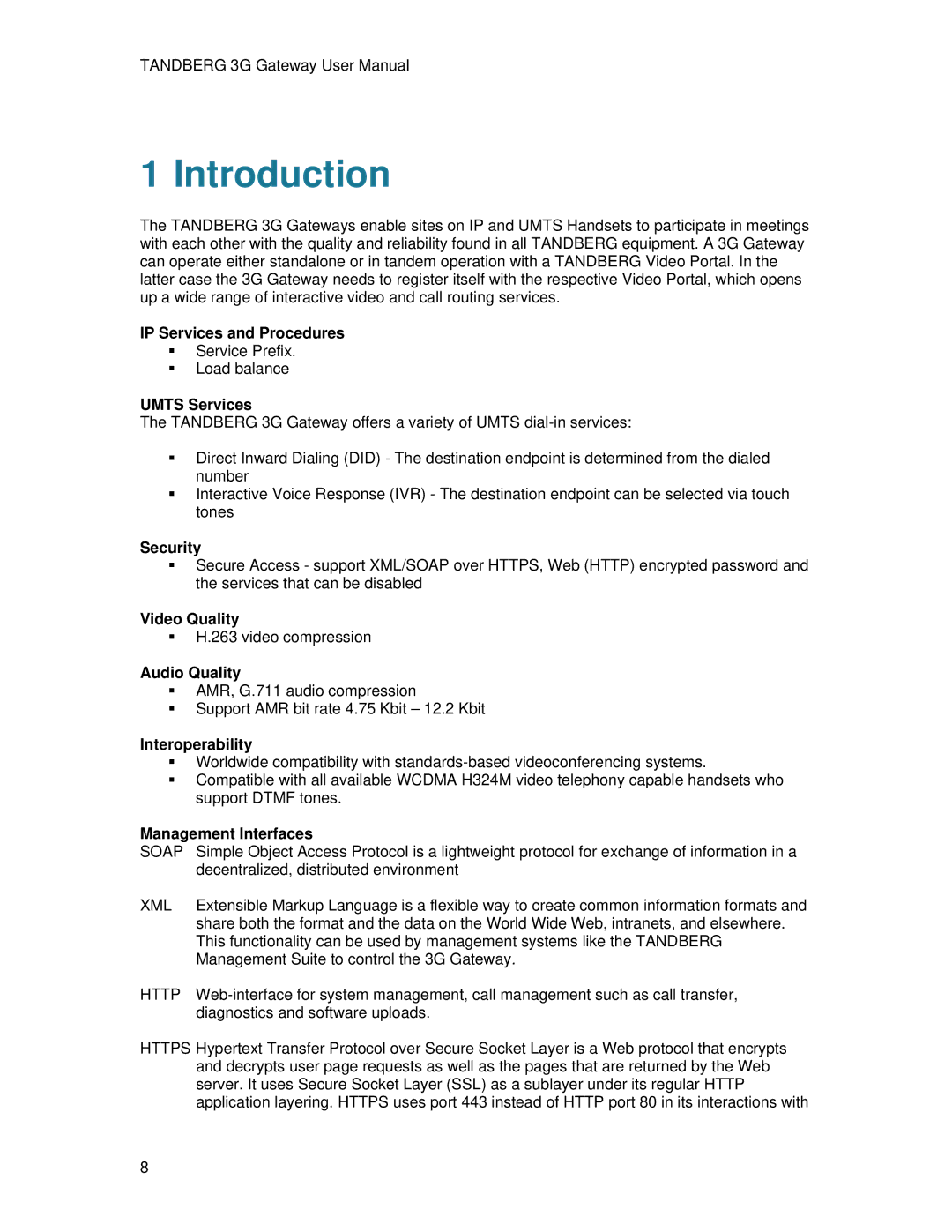TANDBERG 3G Gateway User Manual
1 Introduction
The TANDBERG 3G Gateways enable sites on IP and UMTS Handsets to participate in meetings with each other with the quality and reliability found in all TANDBERG equipment. A 3G Gateway can operate either standalone or in tandem operation with a TANDBERG Video Portal. In the latter case the 3G Gateway needs to register itself with the respective Video Portal, which opens up a wide range of interactive video and call routing services.
IP Services and Procedures
Service Prefix.
Load balance
UMTS Services
The TANDBERG 3G Gateway offers a variety of UMTS
Direct Inward Dialing (DID) - The destination endpoint is determined from the dialed number
Interactive Voice Response (IVR) - The destination endpoint can be selected via touch tones
Security
Secure Access - support XML/SOAP over HTTPS, Web (HTTP) encrypted password and the services that can be disabled
Video Quality
H.263 video compression
Audio Quality
AMR, G.711 audio compression
Support AMR bit rate 4.75 Kbit – 12.2 Kbit
Interoperability
Worldwide compatibility with
Compatible with all available WCDMA H324M video telephony capable handsets who support DTMF tones.
Management Interfaces
SOAP Simple Object Access Protocol is a lightweight protocol for exchange of information in a decentralized, distributed environment
XML | Extensible Markup Language is a flexible way to create common information formats and |
| share both the format and the data on the World Wide Web, intranets, and elsewhere. |
| This functionality can be used by management systems like the TANDBERG |
| Management Suite to control the 3G Gateway. |
HTTP | |
| diagnostics and software uploads. |
HTTPS Hypertext Transfer Protocol over Secure Socket Layer is a Web protocol that encrypts and decrypts user page requests as well as the pages that are returned by the Web server. It uses Secure Socket Layer (SSL) as a sublayer under its regular HTTP application layering. HTTPS uses port 443 instead of HTTP port 80 in its interactions with
8
